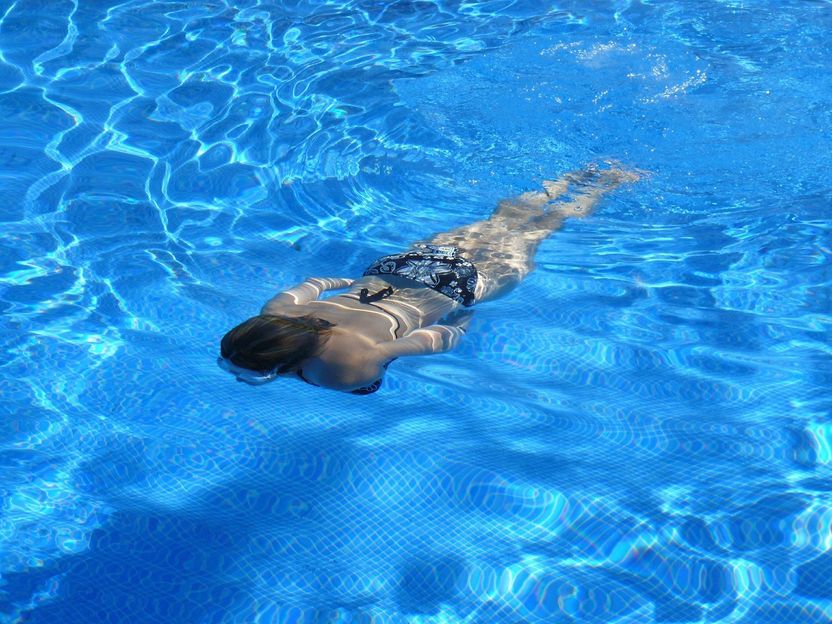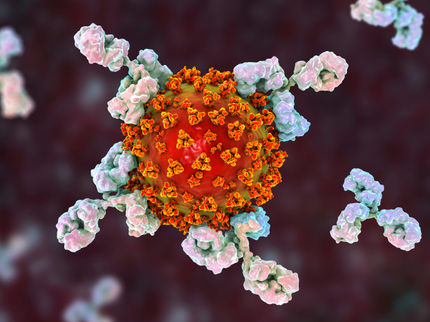Researchers explain the transmission routes of SARS-CoV-2 on beaches and in swimming pools
In recreational activities, SARS-CoV-2 infection from contact with water from standard bathing conditions is very unlikely
Advertisement
Researchers from the Spanish National Research Council (CSIC) have drafted a report that compiles the current state of knowledge on how the SARS-CoV-2 virus, which causes Covid-19 disease, is transmitted in spaces used for bathing and other water activities. Of the possible routes of transmission in the environments referred to in this report (swimming pools, beaches, rivers, etc.), the main route of transmission of SARS-CoV-2 is through respiratory secretions generated by coughs and sneezes and person-to-person contact.

In swimming pools, the regular use of disinfectants is sufficient to deactivate the virus.
Pixabay
Agglomerations that may occur in swimming pools and beaches, as well as objects of common use, may continue to serve as a mechanism of contagion. Other possible routes of infection reviewed are those derived from the presence of the virus in wastewater that may reach bodies of bathing water and the survival of the virus from bathers in water, sand and bordering surfaces.
The report was written by six researchers from CSIC centres: Ana Allende, from the Centro de Edafología y Biología Aplicada del Segura (CEBAS-CSIC), Alicia de Andrés, from the Instituto de Ciencias Materiales de Madrid (ICMM-CSIC), Antonio Figueras, from the Instituto de Investigaciones Marinas (IIM-CSIC), Gloria Sánchez, of the Institute of Agrochemistry and Food Technology (IATA-CSIC), Joan Grimalt, of the Institute of Environmental Diagnosis and Water Studies (IDAEA-CSIC), and Carlos Prieto, Deputy Vice-president of the Scientific-Technical Areas of the CSIC.
Researchers have drawn on the scientific literature available to date to provide a number of indications and recommendations for water recreation sites.
Considerations in aquatic recreational spaces
In recreational activities, SARS-CoV-2 infection by contact with water from standard bathing conditions is very unlikely. However, these activities usually involve a loss of recommended social distancing measures.
In swimming pools and spas, the use of disinfectant agents is widely implemented in order to avoid microbial contamination of the water by the influx of users, and this measure should be sufficient for the inactivation of the virus.
Aerosols generated in a spa or medicinal water facility will have the same disinfection characteristics as bathing water from these facilities. In those cases where the environment of the facilities is maintained at high temperatures, such as in the case of saunas and steam baths, it is expected that, due to the high temperature (> 60 ºC), the survival of the virus will be reduced.
Regarding seawater, although there is currently no data on the persistence of SARS-CoV-2, the dilution effect, as well as the presence of salt, are factors that probably contribute to a decrease in viral load and its inactivation by analogy to what happens with similar viruses.
However, survival of SARS-CoV-2 in river, lake, freshwater and untreated pool water is superior compared to swimming pools and salt water, and therefore precautionary measures should be taken to avoid crowding, these being the most inadvisable water environments in relation to other alternatives.
Other factors that may be of concern are the prevalence of the virus in the sand present on beaches or riverbanks. Although there are no experimental studies on this subject, the combined action of seawater salt, solar ultraviolet radiation and the high temperature the sand can reach are favourable to the inactivation of the pathogens. It is also stressed that any form of disinfection of the sand on the beach must be respectful of the environment and it is not recommended that it be disinfected using the usual procedures for urban public spaces.
Complete and detailed information is available on the websites of the IDAEA, the CSIC, the Ministry of Science and Innovation and the Digital CSIC.
Note: This article has been translated using a computer system without human intervention. LUMITOS offers these automatic translations to present a wider range of current news. Since this article has been translated with automatic translation, it is possible that it contains errors in vocabulary, syntax or grammar. The original article in Spanish can be found here.


























































